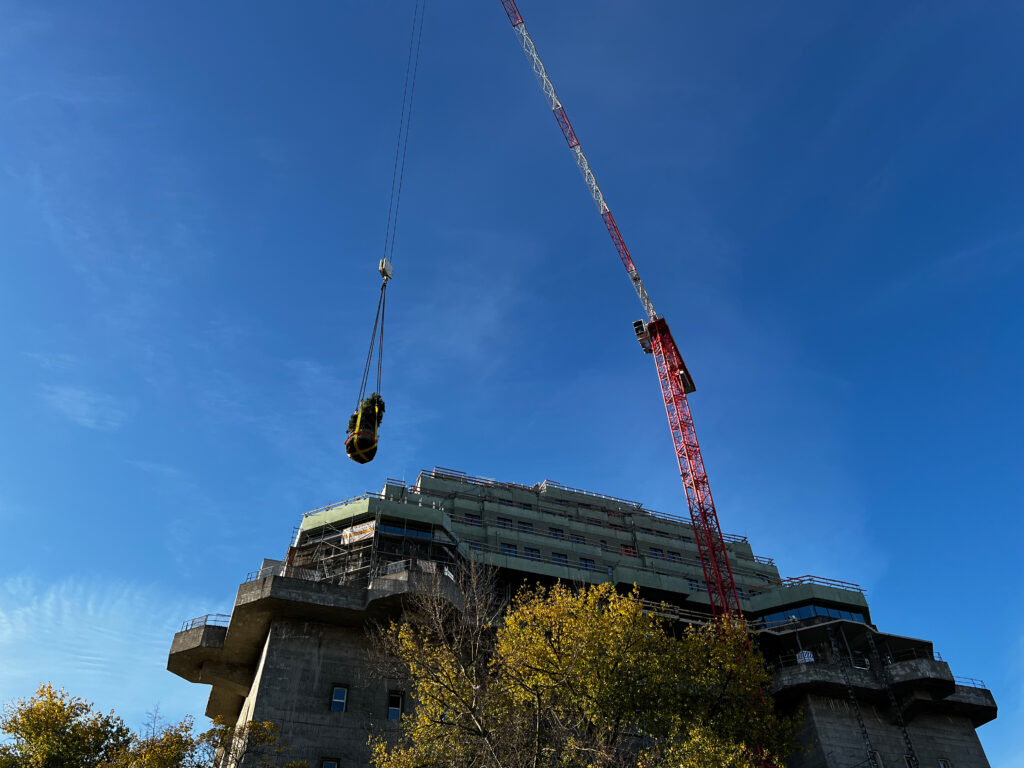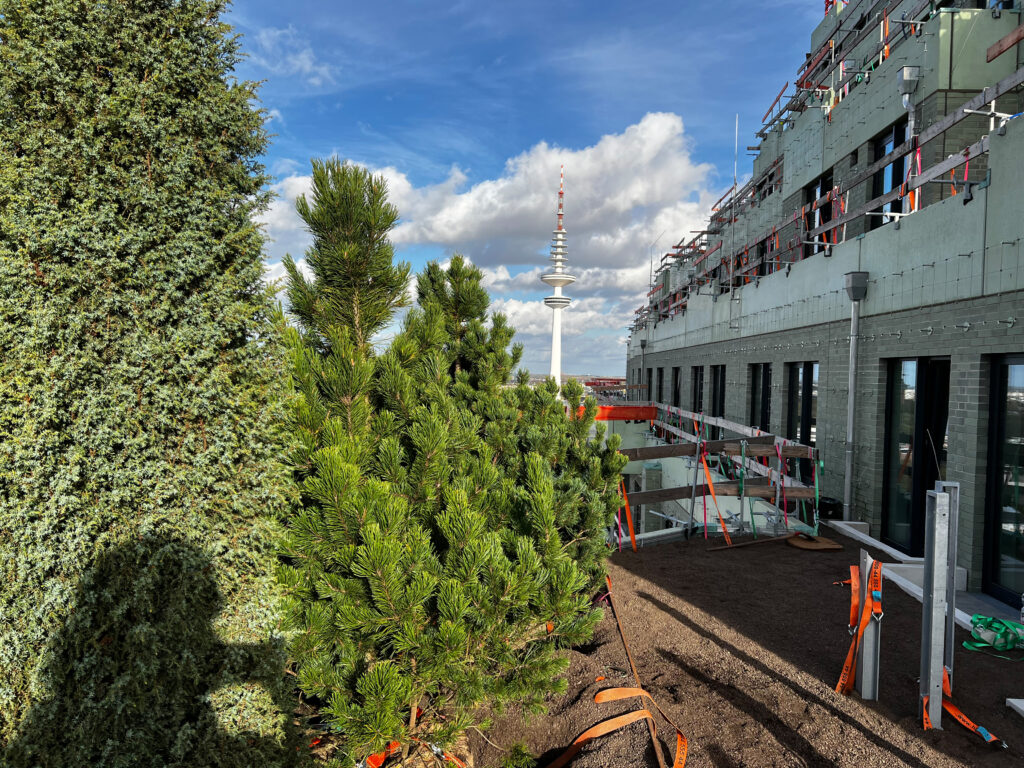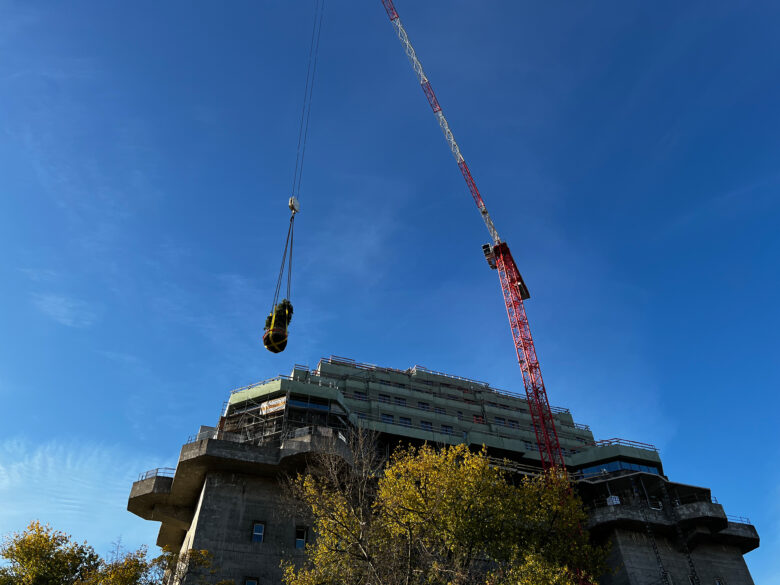Bunker St. Pauli: First trees for a green vision of the future
Start of the bunker greening: The first trees are now being planted. Scientists are supporting the project – and see the green bunker as a model for climate adaptation in major cities worldwide.
Landscapers began planting: With the help of a crane, three mountain pines (Pinus mugo) and a columnar juniper (Juniperus communis) were planted on the second of the new levels on the southwest side. The woody plants, each 3 meters tall, are 15 to 20 years old and weigh about half a ton, and are the first of 4,700 plants (and another 16,000 perennials) that will soon be growing in the Stadtgarten high above the roofs of Hamburg. This will require 2,000 cubic meters of substrate specially developed for the site. It has an extremely low dead weight but can absorb a lot of water.

The first tree floats towards its new location at a height of around 50 meters. The mountain pine is almost 3 meters high and weighs half a ton.
In total, more than 7,600 square meters of green and community space and 1,700 square meters of landscaped façade space are being created on five new pyramid-like floors. Interest in the unique redesign is high. Landscape architects and environmental planners see the St. Pauli Green Bunker as a trend-setting beacon project for the ecological challenges that major cities in particular are now facing. After all, heat waves, droughts, heavy rainfall and air pollution are particularly affecting international metropolises with millions of inhabitants. Scientist Marco Schmidt from TU Berlin: “The St. Pauli bunker will become a role model and scientific demonstration project for climate adaptation in major cities worldwide.”

The first tree floats towards its new location at a height of around 50 meters. The mountain pine is almost 3 meters high and weighs half a ton.
One of the most pressing questions, which the current UN Climate Report 2022 also addresses for the first time in a separate chapter: How can the heating of major cities be stopped? In order to be able to provide precise evidence of the effects of greening at a later date, the experts at TU Berlin have installed around 80 sensors with around 200 data points throughout the bunker. In addition to the various data from the building control system, they will record precise values for five years: including precipitation, temperature, humidity, wind speed, atmospheric counter-radiation, global radiation, radiation balance, runoff intensity and evaporation. The findings on the effect on the building and the microclimate in the neighborhood will be evaluated and can then be made available to future similar projects.
Text/Photo: Frank Schulze Kommunikation


Comments are closed.